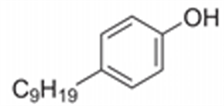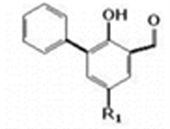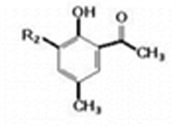ORDERING INFORMATION
Good laboratory practices include the proper use of any HPLC column and using the Cogent Silica-C™ columns are no different. On this page you will learn how to get the best results from these Columns. Click HERE for General Instructions on using all Cogent TYPE-C™ Columns.
Good laboratory practices include the proper use of any HPLC column and using the Cogent Silica-C™ columns are no different. On this page you will learn how to get the best results from these Columns. Click HERE for General Instructions on using all Cogent TYPE-C™ Columns.
Start-Up Instructions:
SELECT THE MODE OF HPLC to use with Different Types of Compounds:
RP - Reversed-Phase: The Cogent Silica-C phase is primarily suited for polar compounds and thus has limited use in the Reversed Phase (RP) mode.
ANP - Aqueous Normal-Phase: While Cogent Silica-C™ can operate in ANP generally, the Cogent Diamond Hydride™ is a better choice as it provides enhanced selectivity and efficiency for polar compounds. Other Cogent columns with polar modifications such as, Diol™, Amide™ and UDC-Cholesterol™ provide enhanced Selectivity for specific cases of compounds in the ANP mode.
ONP - Organic Normal Phase: This separation mode is the primary use for the Silica-C™ column involving moderately polar analytes.
ONP - Organic Normal Phase: This separation mode is the primary use for the Silica-C™ column involving moderately polar analytes.



Some Examples of substituted phenols typically done in ONP - Organic Normal Phase HPLC.
BEFORE YOU USE THE COLUMN:
- If you are changing your HPLC instrument from RP to ONP; pump 100% methanol for 15 minutes at 1 mL/min flow rate, followed by 15 minutes 100% methylene chloride. The column is then ready to be equilibrated with a mobile phase for ONP-HPLC.
- There is no need to remove all water or dry the organic solvents used with the Cogent Silica-C™ column due to its silica hydride nature.
- Completely purge the solvent lines of the previous mobile phase unless it is freshly prepared and identical to the one you will be using for the Silica-C™ column.
- Purge the injection port to remove any residual compounds from previous analyses.
- Equilibrate the column for 15 minutes with the starting mobile phase conditions for your method.
- Review Specifications (tolerance for pH, mobile phase and pressure) for these columns; Click HERE.
- When using "dirty" matrices or aggressive mobile phases, inline filters or guard columns should be used.
- All solvents used must be of minimum HPLC grade and should be degassed prior to use as well as degassed inline by your instrument if possible.
- Buffers should be prepared fresh and removed from the system and column daily.
- Before attaching the column to the instrument, purge the solvent lines of previous mobile phases unless it is identical to the one you will be using for this column and freshly prepared.
- Purge the injection port to remove any residual compounds from previous analyses.
- Install the new column according to the instrument instructions following "Good Laboratory Practices". Ensure the fittings and tubing are all properly connected.
- Equilibrate the column for 30 minutes with a 50:50 mixture of organic solvent and water including any additives that will be used in your method.
- For ANP: Start with your mobile phase at 50:50 organic/water. To increase the retention, increase the organic content.
Method Development Tips for Silica-C™:
Before starting any method development it’s important to follow the START-UP INSTRUCTIONS above and to have read: How to Use TYPE-C™ Columns.
RP - REVERSED PHASE METHODS:
- Since the Silica-C™ has a slightly hydrophobic surface, using it for RP should be limited. For the analysis of typical non-polar compounds, it is advisable to select one of the more suitable Cogent columns: Bidentate C18™, Bidentate C8™, Phenyl Hydride™ or UDC Cholesterol™.
ANP - AQUEOUS NORMAL PHASE METHODS:
- The Cogent Silica-C™ can function in the ANP mode however, in most cases a more suitable column would be the Cogent Diamond Hydride™ or other Cogent columns that are modified with polar groups including Cogent Amide™, Cogent Diol™ and Cogent UDC-Cholesterol™.
- The weak solvent is typically Hexane and the strong solvent can vary significantly and is often Ethyl Aetate, Methylene Chloride, Chloroform or Propanol. For isocratic methods with samples that have a small number of analytes, start with a 50:50 mixture of strong and weak solvent and increase the amount of weak solvent in 10% increments to increase retention. For more complex samples use a gradient starting with 90% hexane and decrease to 20% hexane over 10 min. Adjust the gradient as needed to get the desired resolution. When using the Cogent Silica-C™ it is NOT necessary to dry the mobile phase solvents.
Following Column Use:
- Before removing the column from the instrument, fill it with 90:10 weak solvent/strong solvent mobile phase combination getting it ready for storage.
- Click HERE for complete instructions on How to Store Cogent TYPE-C™ Columns
- To prevent "pressure shock" and damage to the column; be certain all "pressure" in the system is zero before disconnecting it from the instrument.
